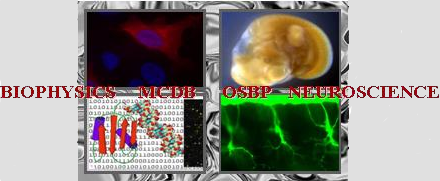Talk abstracts
Talk on Tuesday 09:30-09:45am submitted by Kelly Rich
ALS-associated KIF5A mutation causes delayed and decreased recovery following sciatic nerve crush.
Kelly A. Rich (Neuroscience Graduate Program), Meredith L. Jones (Neuroscience Undergraduate Program), Ashley Fox, Hallie Harris, Mehmet Yalvac (Department of Neurology, The Ohio State University Wexner Medical Center), Megan G. Pino (Neuroscience Graduate Program), W. David Arnold (Department of Neurology, The Ohio State University Wexner Medical Center), Stephen J. Kolb (Department of Neurology, The Ohio State University Wexner Medical Center)
Abstract:
Objective: KIF5A encodes kinesin protein KIF5A, which is involved in anterograde transport of cargos. C-terminal KIF5A mutations have been identified in patients with amyotrophic lateral sclerosis (ALS). The mechanism linking KIF5A mutations and ALS pathogenesis is unknown. Peripheral nerve injury (PNI) is an established paradigm to study mechanisms of axon repair, including axon transport. Degradation of the motor unit is a primary biological feature of ALS. We hypothesize that ALS-associated KIF5A mutations alter the ability of motor neurons to be maintained or repaired.
Methods: We created a novel mouse with an ALS-associated C-terminal Kif5a mutation (c.3005+1G>A; heterozygous [HET] Kif5a+/c.3005+1G>A; homozygous [HOM] Kif5a c.3005+1G>A/c.3005+1G>A). PNI was induced (sciatic nerve crush) in 14-week mice (wildtype [WT], HET and HOM). Mice were monitored via weekly electrophysiological assessments (compound muscle action potential [CMAP], motor unit number estimation [MUNE]), and unilateral hindlimb grip strength). At 16 weeks post PNI, we studied motor unit histopathology (motor neurons, sciatic nerve axons and neuromuscular junctions [NMJ]).
Results: We observed a loss of functional motor units in mutant mice compared to WT during recovery from PNI. On histopathology, we saw mutant-specific deficits in motor neurons, sciatic nerve axons and at the NMJ. Ipsilateral motor neurons showed decreased area in mutants (HET and HOM) as compared to WT. In sciatic nerve axons, we saw decreased axon fiber diameter in the ipsilateral nerves across all genotypes, however the decrease was most pronounced in mutant mice. At the NMJ, we saw decreased pre- and postsynaptic co-localization area as well as nerve terminal area in mutants.
Conclusions: We have defined a repair defect in motor axons with an ALS-associated KIF5A mutation. Our findings suggest Kif5a C-terminal mutations result in a loss of normal KIF5A function, impacting the motor unit. Mutant mice demonstrated observable pathological correlates throughout motor unit tissues. This work establishes a model system to develop disease- modifying therapies and understand basic principles of KIF5A biology.
Keywords: Amyotropic Lateral Sclerosis, Electrophysiology, Motor Unit
